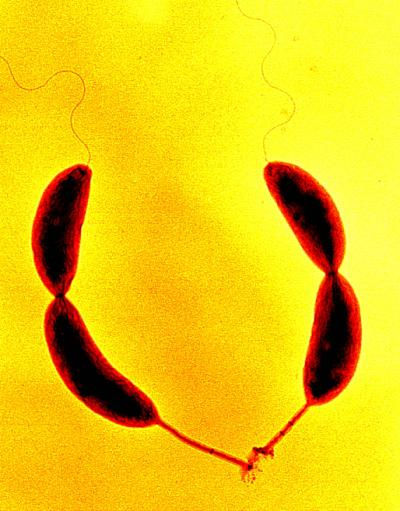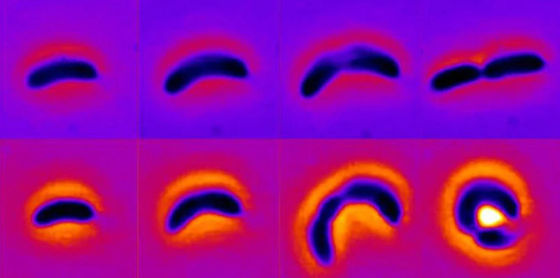Bacteria that 'deform' over 10 generations to withstand antibiotics are found, and when antibiotics run out, they re-deform to their original form

Mechanical feedback promotes bacterial adaptation to antibiotics | Nature Physics
https://www.nature.com/articles/s41567-020-01079-x
Bacteria Have Been Seen Literally Changing Shape to Avoid Antibiotics
https://www.sciencealert.com/bacteria-can-change-shape-to-help-them-become-more-resillient-to-antibiotics
It is a bacterium called Caulobacter crescentus that has been newly deformed and confirmed to withstand antibiotics. Caulobacter crescentus is a type of aquatic bacterium found in freshwater lakes and rivers, and is called ' the owner of the strongest adhesive in nature ' because it is an extremely strong adhesive and lives on the surface of stones. There is also.

A research team led by Shiladitya Banerjee, a biologist at Carnegie Mellon University in the United States, used the antibiotic
The concentration of antibiotics given to Caulobacter crescentus was lower than the lethal concentration, so Caulobacter crescentus did not die, but the rate of growth and proliferation was significantly slowed down. In addition, microscopic observation of the 10th generation Caulobacter crescentus after exposure to antibiotics revealed that the fungus had changed shape.
Below is a comparison of Caulobacter crescentus (top) before exposure to antibiotics and Caulobacter crescentus (bottom) after exposure to antibiotics. Caulobacter crescentus, which had been exposed to antibiotics for a long period of time, had a C-shaped body with curled cells.

by Shiladitya Banerjee
When the deformed Caulobacter crescentus was returned to an antibiotic-free environment, it returned to its original straight shape over several generations. Scientists say that Caulobacter crescentus is rounded to reduce surface area to volume, or widen cells to increase intracellular volume, reducing the amount of antibiotics that pass through the cell surface and intracellularly. I speculate that he may have tried to dilute the concentration of antibiotics.
In a treatise, the research team said, 'The results of this study show the adaptive mechanisms that bacteria can choose to counter antibiotics and the future of the role that cell shape plays in antibiotics. It is a stepping stone for traditional research. '
Related Posts:







